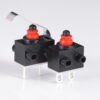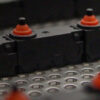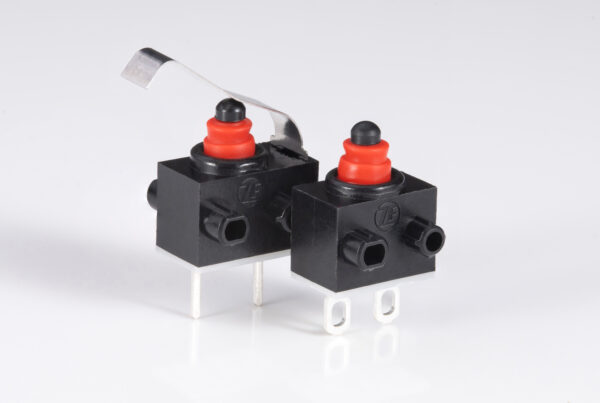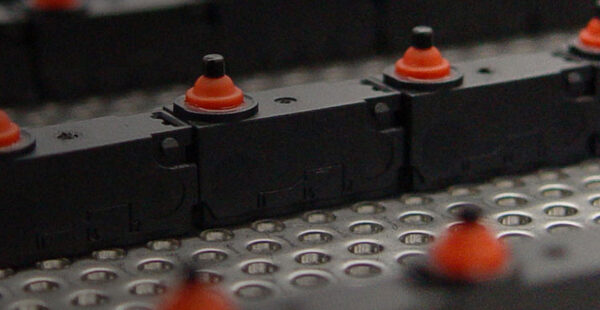
Bright Future for Wireless Switch Modules
As featured in the November Issue of Components in Electronics Magazine
Derek Fisher explains how to integrate energy-harvesting wireless switch modules into data networks with the KNX bus standard
Until now energy-harvesting wireless switches could only be integrated as energy-harvesting components in specific solutions by means of a gateway. Now the wireless switch module can be directly integrated into data networks with the building automation bus standard KNX.
In today’s highly networked world there is strong demand for new ways for a mobile and flexible transfer of information that requires very little energy. Because of that energy-harvesting wireless switches are in great demand. They can be used easily and effectively and are an ideal switch solution for the transfer of information.
Energy-harvesting means “operation without auxiliary power”: Instead of creating an auxiliary power with an integrated energy source or adding it with an external power supply, the energy that is available in the surrounding environment or that impacts on the system is transformed. Generally that means that an energy harvester is an energy converter.
The idea to use the energy in the surrounding environment for additional functions isn’t new. Viewed historically, early examples are sundials, windmills, hydraulic rams, bicycle dynamos, and selenium light meters. Viewed technically, energy harvesters have two comparable reinforcing effects: To lower the basic energy need or to extend the running time of the battery of mobile devices, an increasing number of communication standards is designed for lower energy consumption or there are stand-alone low-energy variants like Bluetooth Low Energy or ZigBee Green Power. Together with increasing availability of better and cheaper low power electronic components this closes the technical gap. There are more and more integration solutions for energy-harvesting wireless switches because they are becoming more powerful and efficient and the system requirements are becoming cheaper to realise.
Highly efficient components and an optimized electronic tuning for high energy efficiency for example can enable wireless switch modules to communicate directly with standard building automation radio-standards. So far solutions using energy-harvesting wireless switches have been specific solutions enabling only very simple communication. This simple information had to be extracted by complex and expensive gateways to be read by the building automation systems. Now the linking over a gateway with a limited functionality of the overall system is not required anymore.
The ZF subsidiary CHERRY has first developed a wireless switch module that is compatible with the worldwide building automation bus standard KNX. The radio protocol as well as the pairing of the components (including a central configuration via the ETS (Engineering Tool Software) software) fully meets the KNX standard. CHERRY is also already developing wireless switch modules for other building automation bus standards like ZigBee Green Power. The energy-harvesting wireless switch module from CHERRY works on an inductive basis. The inductive pulse generator transforms the mechanical actuation force into an electrical energy impulse. The actuation of the pulse generator suddenly reverses the magnetic flow in the coil system from which the electrical energy results. The energy impulse contains the electrical energy which is transformed into a constant supply voltage by the energy management electronics. It is also stretched over time, so it can provide the consumer (in this case radio electronics with antenna) with the energy required to send a radio signal with the necessary data. Thanks to its miniature format, the high efficiency in the entire function chain and the long life of up to 1.000.000 switching cycles, the wireless switch module from CHERRY only requires a very low actuating force and can be designed to fit into small spaces without the need for any maintenance.
The market trend in building automation is leaning towards centralised units that manage the communication from transmitters and receivers and build technical bridges to link together the areas of multimedia, building automation, computer networks, telecommunication and Internet via cable as well as radio. In addition to the pure connection the network needs to offer additional benefits for the user. At the front door for example the energy-harvesting wireless switch can be configured in ‘holiday mode’: This means that if the front door is locked all lights are switched off, all shutters are closed, the alarm system is activated, the video intercom is diverted to the smartphone, the WLAN is de-activated, the heating is adjusted and linked to a weather station.
A KNX wireless switch module can for example be designed for the following multiple applications:
- Switch with four functions (e.g. light, switch actuator, socket actuator, etc.)
- Pushbutton with four functions (e.g. light, door bell, etc.)
- Multi-channel dimmer (e.g. for LED lighting)
- Operation of shutters and venetian blinds
- Foot switch
- Multi-channel remote control
Safety critical applications are currently the technical limits for the use of energy-harvesting wireless switches. For example the safety-critical requirements of the norms EN ISO 13849-1 (PL) or EN/IEC 62061 (SIL) are about the fail-safe operation combined with an appropriate diagnostic capability. The basis of the diagnostic capability is a bi-directional communication of the transmitter and receiver with a permanent or periodic status request. Because an energy-harvesting wireless switch module is only in operation during actuation and shortly afterwards there currently is no solution for a reply to a status request without actuation. However, solutions are currently being developed.
The future certainly belongs to wireless switch modules because Industry 4.0 and Smart Home are topics that are already being talked about everywhere already. Because wireless switch modules can fulfil many functions, both industry and consumers will be able to benefit from these devices.
The energy-harvesting wireless switch module for the KNX standard from CHERRY will be available from the middle of 2015.
For further information about energy harvesting click here
About CHERRY
CHERRY is a registered brand of ZF Friedrichshafen AG. Under the CHERRY product brand, the Electronic Systems business unit develops and produces components for industrial and household applications, as well as computer input devices.
About ZF Group
ZF is a global leader in driveline and chassis technology with 122 production companies in 26 countries. In 2013, the Group achieved a sales figure of about €16.8 billion with approximately 72,600 employees. In order to continue to be successful with innovative products, ZF annually invests about 5 % of its sales (2013: €836 million) in research and development. ZF is one of the ten largest automotive suppliers worldwide








